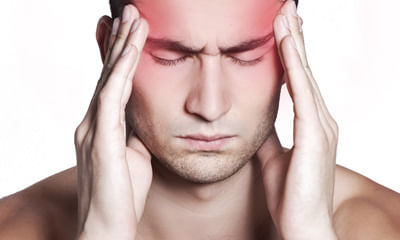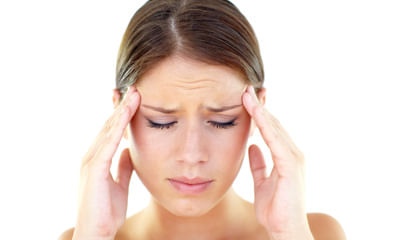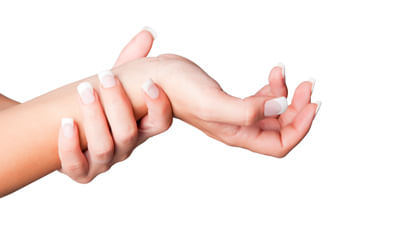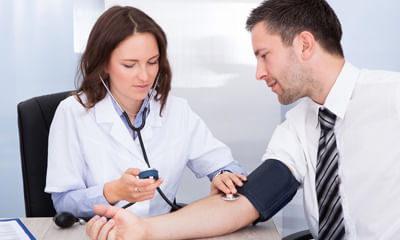Throbbing Pulse In Leg
Hello doctor. I have been facing severe headache for the past couple of months. Doctor please tell me what are the sympt ...
Ask Free Question
Migraine symptoms are different with every individual. There are four stages and symptoms can be different at every stage. These include - prodrome (symptoms- fatigue, mood swings, severe thirst, constipation, food cravings, sensitive to smell, light, or sound), aura (symptoms- flashes of light, black dots, complete vision loss, difficulty in speaking clearly, heaviness in arms or legs, ringing in ears, changes in smell, taste or smell), attack (symptoms- nausea and vomiting, pain on both sides of head, pulsing or throbbing pain), postdrome (symptoms- fatigue, feeling happy or refreshed without any reason, muscle pain, food cravings.
I am 26 year old female and unmarried if it is anything to do with my health. I have history of pcos and sinus. For last ...
Ask Free Question
Your symptoms suggest more towards stress and anxiety, please get a thyroid profile done to rule out.
What is migraine? I always have headache whether it is too hot or cold or I am hungry or feed some more. ...
Ask Free Question
A headache of varying intensity, often accompanied by nausea and sensitivity to light and sound. Migraine headaches are sometimes preceded by warning symptoms. Triggers include hormonal changes, certain food and drink, stress etc. It can be migrain. 1. Take adequate night sleep 2. Eat at regular intervals. As starvation/gas can trigger migrain 3. Avoid things that can trigger migrain. Common triggers include alcohol, caffeine or poor sleep. Inculcate good sleep practices like having a regular bedtime schedule and avoiding naps, caffeine and tv before bedtime. 4. Don't take stress- pursue an enjoyable activity or verbalising frustration to reduce stress and improve mental health. 5. Avoid foods that you know triggers your migrain. 6. Hot packs and heating pads can relax tense muscles. Warm showers or baths may have a similar effect 7. Drink water. “dehydration can be a big cause of headaches,” for this homeopathic treatment is very effective for more details you can consult me.
What can be reason behind pulsing and throbbing in different body parts. I am having this past few days? Sometimes it is ...
Ask Free Question
Hi lybrate-user, It is known as palpitation. Palpitations are the awareness of heartbeats. The sensation may feel like pounding, fluttering, racing, or skipping beats. Palpitations are common. Some people find them unpleasant and alarming, but they rarely indicate a life-threatening heart disorder. Many people without heart disease also have palpitations. Causes for Palpitation are below *Exercises *Strong emotions like anxiety, fear, etc *Low blood pressure *Fever *Dehydration, etc.
Dear Doctor, My name is premaraju, im having migraine head ache frequently and when I got more pain im using tablets for ...
Ask Free Question
A migraine can cause severe throbbing pain or a pulsing sensation, usually on just one side of the head. It's often accompanied by nausea, vomiting, and extreme sensitivity to light and sound. Migraine attacks can cause significant pain for hours to days and can be so severe that the pain is disabling. Warning symptoms known as aura may occur before or with the headache. These can include flashes of light, blind spots, or tingling on one side of the face or in your arm or leg. If your symptoms match with above symptoms,diagnosis of Migraine is clear and you do not need an MRI. But incase your headaches are not better after taking Migraine medicines,then you need to go for further investigations. Homoeopathic medicines will benefit you and treat these headaches . Incase you want to take Homoeopathic treatment, you can consult me through Lybrate.
I occasionally have pain in my right side of head. Why it happens again and again. What happens if it continues for long ...
Ask Free Question
Neck Exercises. Neck Stretching. Postural Correction. Shoulder Shrugs. Take frequent Breaks at work. Core Strengthening Exercises. Use cervical pillow. Use Back Support. Self Massage the back of neck.
I am 50 years old left hand fingers are feeling numb from 6 to 7 hours what should I do? ...
Ask Free Question
Pressure upon the arm nerves or vessels causing numbness, tingling or temporary paralysis of the arm may result from: Sleeping with the hand under the head Sitting with the arm hanging over the back of a chair Wearing straps or carrying a bag or rucksack Inflated cuff during measuring blood pressure Raising the Arms Above the Level of the Heart Keeping the hand (s) above the level of the heart during work or sleep can prevent appropriate blood perfusion of the hands, and cause numbness, tingling or partial paralysis of the hand (s) within few minutes. Cold In cold weather, narrowing of the arteries in the hands and fingers can prevent appropriate blood supply and thus numbness, tingling, pain or temporary paralysis of the hands and fingers. DISORDERS OF THE NECK (CERVICAL) SPINE Cervical Disk Syndrome Degenerative disc disease (DDD) or injury, like hyper-extension injury in car accidents (head moves rapidly toward the back), can result in bulging or herniated disc (s) pressing upon the cervical (neck) spinal nerves, thus causing symptoms of cervical disc syndrome: Position/movement dependent pain, tingling or numbness in the neck, shoulders, upper back, arm, hand or fingers (when the roots of cervical spinal nerves are compressed) Stumbling gait, difficulty with fine hand moves, tingling in the body or legs (when the cervical spinal cord is compressed) Symptoms can appear immediately after the injury, or develop slowly over the weeks or months. Diagnosis is made by a CT or MRI of the neck spine. Therapy includes immobilization, cold therapy followed by heat therapy, cervical traction, analgesics, muscle relaxants, physical therapy or surgical decompression of the nerve roots or spinal cord. Cervical Spondylosis Cervical spondylosis is an age-related deformation of the cervical spine; deformed vertebra or discs can press upon the spinal cord or nerve roots in the neck and cause chronic symptoms, like in the cervical disc syndrome (see above). INJURIES Disorders of the Brachial Plexus The brachial plexus is formed by the cervical nerves C5-C8 and thoracic nerve Th1. The plexus extends from the lower part of the neck to the armpit. From brachial plexus all main nerves to the arm (axillary, musculocutaneus, ulnar, radial, and median nerve) arise. Brachial Plexus Injuries Most of brachial plexus injuries usually occur in car, motorcycle and sport accidents, during birth, or in bullet or knife injuries. Symptoms and prognosis depend on the nerves involved and extent of an injury: nerve stretching, scar tissue (neuroma), partial or complete nerve rupture or tearing of the nerve from the spinal cord. A limp or paralyzed arm, severe pain and numbness, especially in the neck and shoulders, and weak arterial pulses in the arm are main symptoms. Some brachial plexus injuries may heal without treatment. Many children who are injured during birth improve or recover by 3 to 4 months of age. Treatment of brachial plexus injuries includes physical therapy and, if necessary, surgery. Thoracic Outlet Syndrome Thoracic outlet is the space between the collar bone (clavicle), first rib and corresponding ligaments through which nerves and vessels travel from the base of the neck toward the armpit. Thoracic outlet syndrome (TOS) results from a compression or extension of the subclavian artery or vein, or brachial plexus (nerves), commonly occurring in motorbike accidents, athletes, swimmers, weight lifters, etc. Symptoms include: Muscle wasting at the base of the thumb, numbness, feeling of pins and needles, or pain in the shoulder, armpit, arm or hand (when nerves are compressed) Pale, cool arm with weakened arterial pulse in the arm, numbness and pain (when vessels are compressed) Radiation-Induced Brachial Plexopathy Radiation-induced damage of the brachial plexus can follow radiotherapy of the chest, axillary region, thoracic outlet or neck. Symptoms may appear months to years after radiation therapy and include numbness, swelling, weakness or pain in the arm. Broken Shoulder Blade Shoulder blade (scapula) is the bone in the upper back that connects the collar bone (clavicle) and arm bone (humerus). Broken shoulder blade, usually from a car or motorbike accident, can result in pain, swelling, bruising or deformation of the shoulder blade area, and weakness, numbness or tingling in the shoulder or arm. Broken Arm, Wrist, Hand or Finger Symptoms of broken arm (the arm bone â humerus, elbow, and bones of the forearm â radius and ulna) include: Severe pain increasing with arm movement Obvious deformity, swelling, tenderness and bruising over the site of bone fracture Stiffness or inability to move your arm, hand or finger Weakness, numbness or tingling in the arm, hand or fingers Cubital Tunnel Syndrome or Ulnar Neuropathy The ulnar nerve arises from the brachial plexus in the neck and travels under the collar bone, downside along the inner side of the upper arm, behind the inner part of the elbow (Latin cubitus), where it can be felt as a âfunny boneâ and then down to the wrist, hand and little and ring finger. Ulnar nerve entrapment usually results from an elbow injury or constant pressure upon the elbow, like in cyclists or typists. Symptoms, known as cubital tunnel syndrome, include: Pain on the inner side of the elbow or electric shock sensation after touching the elbow The hand, ring and little finger are numb and falling asleep, especially after bending the elbow Limited movements of the ring and little finger (âhandlebar palsyâ in cyclists) Hand (on the little finger side) sensitivity to cold Prevention of ulnar nerve entrapment is by avoiding excessive elbow use. Treatment includes special arm exercises, anti-inflammatory drugs, like ibuprofen, and wearing an elbow splint. DISORDERS OF THE SPINAL CORD AND BRAIN Multiple Sclerosis Multiple sclerosis is a disease of an uncertain cause affecting the nerve tissue of the spinal cord, brainstem or brain. Symptoms can appear suddenly or gradually, âtravelâ among various body parts and include: numbness or tingling in one or both arms (or any other body part), blurred or double vision or blindness, weak or paralysed limbs, problems with urinating or defecating, difficulty maintaining balance, tiredness, etc. Symptoms can last from few weeks to several months, disappear completely and appear again, and, in general, worsen with time. Diagnosis is with MRI of the brain and spinal cord, and examination of cerebrospinal fluid obtained by lumbar punction. Apart from treating symptoms, there is no treatment for multiple sclerosis at the time. ACUTE BRACHIAL NEURITIS Acute brachial neuritis is a rare, supposedly autoimmune inflammation of brachial plexus, occurring at any age, but primarily in young men. Symptoms include severe pain in the upper arms and shoulders, followed by numbness and weak reflexes; the disorder resolves in few months on its own. WRIST DISORDERS Carpal Tunnel Syndrome (CTS) Carpal tunnel syndrome (Latin carpus = wrist) is a painful condition of the wrist, hand and fingers, caused by repetitive use of the wrist, or swelling of the tissues in the wrist, resulting in a pressure upon the median nerve. CTS is a common problem in assembly line workers, computer workers, musicians, mechanics, tennis players, etc. Bone spurs in rheumatoid arthritis, or fluid in hypothyroidism, kidney disease or menopause may also press on the median nerve. Symptoms usually start gradually and include: Tingling or numbness in the thumb, index, middle and ring finger and related part of the hand Pain in the wrist, palm or forearm Difficulty grasping small objects or gripping Hand pain at night Ganglion Cyst Ganglion cyst (Greek ganglion = tumor, cyst = fluid filled sac) is a soft lump, usually appearing on the back of the hand in some people between 20-40 years of age. It is a noncancerous fluid filled sack arising from the tendon sheets or capsule of the joint from an unknown reason. Ganglion cysts may not be always seen from the outside. Gymnasts often have them. Symptoms include: A soft lump or lumps of various size (may exceed an inch), on the back of the hand, inner side of the wrist, base of the finger, or on the last finger joint. Pain or numbness in the wrist, hand or finger (s) DISORDERS OF FINGER ARTERIES Raynaudâs Disease Raynaudâs disease is a painful finger condition due to spasms in the finger arteries. Disease may also affect toes or, rarely, nose, ears, lips and nipples. The cause is not known. Symptoms are triggered by cold (even short term cold like taking something from a freezer) or strong emotions, and appear in the following sequence: Fingers (one, more or all in one or both hands) become pale, numb or cold due to lack of blood flow, then bluish due to a lack of oxygen, then red, with throbbing pain and tingling as blood returns to the affected area. Attacks can occur daily, weekly or occasionally and can last from less than a minute to several hours, usually about 15 minutes. Different areas can be affected at different times. Severe, although rare, attacks can result in finger sores or tissue death (gangrene). Raynaudâs Phenomenon Raynaudâs phenomenon is a term used for the same finger symptoms as in Raynaudâs disease, when the cause is known. Causes include: connective tissue diseases, like scleroderma, systemic lupus erythematosus (SLE), Sjögrenâs syndrome, dermatomyositis, and polymyositis, carpal tunnel syndrome, obstructive arterial disease, anti-hypertensive drugs, ergotamine (used for treating migraine), chemotherapeutic medications, etc. In workers exposed to vinyl chloride, using vibrating tools, typists and pianists, Raynaudâs phenomenon also commonly occurs. DIAGNOSIS OF ARM NUMBNESS OR TINGLING History of arm numbness. Knowing an exact time course of tingling or numbness, and eventual arm weakness, head or legs involvement, history of arm or neck injuries, repetitive elbow or wrist use, reactions to cold, hypothyroidism, diabetes, menopause may give a strong evidence about the cause. Neurological examination. Testing of sensitivity of a particular arm dermatome can reveal which nerves are involved. Imaging. X-ray may reveal arthritis in the neck spine, or a broken arm bone. Myelography can reveal herniated disc or narrowed spinal canal. MRI and CT show soft tissues like tumors. Electromiography (EMG) and nerve conduction studies can show the nature of the nerve damage. Together with imaging they are important to evaluate the extent of brachial plexus injury. Blood tests can reveal diabetes, abnormalities in serum levels of sugar (diabetes), calcium, potassium, sodium, magnesium, vitamins B6 or B12, thyroxine (hypothyroidism), sex hormones (menopause). Cold simulation test can reveal Raynaudâs disease or phenomenon. TREATMENT OF ARM NUMBNESS OR TINGLING Firstly, the cause of numbness should be treated if possible. Non-steroid anti-rheumatic drugs like ibuprofen, or antidepressants, may relieve pain and numbness.
I am suffering from migraine from past 5 years I am taking pills every day regularly but still the intensity of the pain ...
Ask Free Question
Hello Mr. Lybrate user Migraine headache is the worst kind of chronic headache. Migraine headache can be defined as severe pounding or pulsing headache that generally starts in the forehead and moves usually towards one side of the head (left side or right side headache) and around the eyes. Migraines, most of the times, attack with warnings or painful symptoms including nausea, vertigo, facial flushing, nasal congestion and dizziness. Acc to Ayurveda this condition is referred as ‘Sooryavarta’. Soorya means ‘Sun’ and avarta means ‘affliction’ or ‘blockage’. The headache gets worsened on sunrise, peaks during noon hours and reduces after evening. Even though this is the typical feature of this illness, it may not be true in all cases. Symptoms may vary based on body prakriti and food habits. Causes acc yo Ayurveda Suppression of natural urges Indigestion Intake of stale food Prolonged exposure to sunlight Oily and spicy food Anger, jealousy, grief, stress etc Intake of dry, pungent and salty food etc Alcohol or smoking Changes in hormone levels during a woman’s menstrual cycle or with the use of birth control pills Changes in sleep patterns – excess sleep or less sleep Exercise or other physical stress Excessive stimulation or stress on sense organs by loud noises, bright lights, strong perfumes / odours, Fasting Stress and anxiety Symptoms Moderate to severe, throbbing headache- right side or left side of the head. Head pain that gets severe with increased physical activity. Sensitivity to light and/or sound. Nausea or vomiting. Red eyes with burning sensation in eyes Loss of appetite Migraine sufferer wants to stay all alone and finds comfort in silent and dark room Depression and irritability Numbness or weakness in an arm or leg. Tips: Do not take pain killers frequently, over intake may cause rebound headache Sleep and eat on time Atleast 7 hours of sleep at night is effective. Avoid fasting. It will increase both Pitta and Vata dosha, worsening migraines. Do not skip meals. Avoid deodorant / perfume Quit smoking and alcohol. Do not use a/c for long period of time. Avoid green chilli use. You can have cinnamon, cardamom, clove, ginger and pepper. Observe for those things or foods that trigger a migraine attack, try to avoid them. Tie a tight cloth around the head to decrease blood flow to the scalp and lessen the throbbing and pounding of migraine headache. Remedies Decoction of jeera and ginger 20 ml twice a day. Raisins and almonds soak over night have in empty stomach. Pomegranate and grape juice. Carrot intake is good during attack. Apply cinnamon powder with warm water on temple and forehead. Steam inhalation with mint leaves. Rx Pathyadi kadha 10 ml_0_10 ml diluting with warm water b/f Niargim tab 1_0_1 a/f gor 3 weeks.
Am a 22 old girl, having severe migraine last 4 months. Already am having migraine. Now am suffering from migraine assoc ...
Ask Free Question
Hello, Migraine:- Some symptoms may include: feeling dizzy or faint. increased sensitivity to light and sound. nausea. pain on one side of the head. pulsing and/or throbbing pain. vomiting Migraine is a form of headache. The pain is usually throbbing, pulsating and bursting in character. At times, the pain is one sided or may involve the whole head. Such pain may last for hours or even days. It is often accompanied by other symptoms like nausea or vomiting. At the same time, there is increased sensitivity to light and sound. The causes of the problem may vary from one patient to another and so will the final choice of the homoeopathic remedy.





